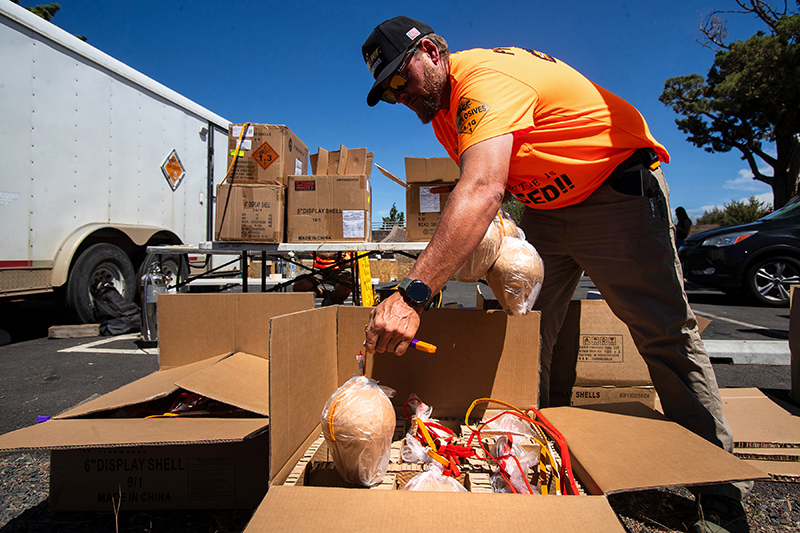Hunting pheasant with a bow
Published 4:00 am Thursday, December 23, 2010

- Mike Huitt, of Sisters, hunted east of Maupin to take a rooster pheasant on the wing with his recurve bow and a feathered shaft.
It’s akin to catching a steelhead on the surface, to making your longest cast to set a fly down light as a feather and see it disappear in the maw of a tarpon. To shoot a pheasant in flight is one of archery’s great thrills.
Kuk-kuk-kuk-kuk. The bird claws to the sky, its long tailfeathers stream behind, its wings a blur, a fury of sound and motion. An arrow streaks from the bow. For a moment, the trajectory of the bird and the arc of the feathered shaft appear to intersect, then the arrow spirals down and the bird climbs out of reach and away.
The night before, as we sat down to beef marsala at the Imperial River Company in Maupin, Mike described his gear. On our hunt in the morning with Sage Canyon Outfitters, Mike would shoot a Hoyt Dorado recurve and a carbon shaft tipped with a G5 small game head and a flu-flu fletch.
A flu-flu is a type of arrow designed to fly a short distance, primarily for aerial targets.
Mike, who owns Top Pin Archery in Sisters, fletched his own arrows with 12-inch white turkey feathers.
To prepare for the hunt, Mike practiced on thrown Frisbees. “I got so I could hit the Frisbee once out of three tries,” he said.
We had the wind in our faces, the sun at our backs. Before us, the Bakeoven Road stretched out toward Mount Hood. We’d picked the only clear day in weeks. His head up, his nose in the air, Poncho, the German shorthair, coursed back and forth in the tall grass.
Mike was intent. Between us, Bob Krein watched his dog. Out there on the point of our wedge, the pointer had dropped his head and his tail had begun to wag. Body rigid, his muscles quivered with the scent of the bird. He turned and locked, his eyes on the prize in the grass.
Mike walked up alongside the dog, an arrow nocked. On his left, I stepped into place and the bird came up, cleared the grass and as it towered above the dog, Mike let fly. My brain registered the bird and the arrow in separate planes and I swung my CZ side-by-side up to take it at 25 yards.
Poncho brought the rooster back, while I reloaded and Mike retrieved his arrow. Only then did it occur to me what a great idea it had been to bring a bowhunter on a bird hunt.
So it went. We hunted out the flat toward the mountain then worked a canyon along a creek, in the junipers and the wild rose. Poncho pointed, we walked in, the bird flushed, Mike shot and I backed him up. The game bag grew heavy, but the archer had yet to connect on a bird. Worse, he wanted it too bad. He was rattled.
We stopped for lunch when the sun was high in the sky and threw clay pigeons by hand for Mike. The practice seemed to settle our bowhunter down.
Now, with the sun in the west, we gave Mike the opportunity to trade his archery tackle for the 12-gauge. He would not have it, except to let me try my hand at three birds. My first try fell short, but my second arrow went beneath the wing. As close as it gets. My third shot fell short again.
Out on a long flat we hunted where once pioneer wagon wheels had bumped a rutted two-track, where Pony Express riders had pounded the dirt to dust and after them the stagecoach. Not far from where we hunted, a German baker, headed to the gold mines in 1862, had been attacked by Indians and liberated of his livestock. Set afoot, he built an oven to sell bread to travelers.
“I don’t think I’ve ever wanted something as bad as I want this,” Mike said. Minutes later, a pheasant flushed out of the grass. Mike missed it and I missed it, an easy shot that I should have made with the 20-gauge. I watched the bird alight 300 yards away at the base of a transmission tower.
There were other birds to chase. But an hour later, we walked back past the tower and Poncho went on point. Last chance, I thought.
In a moment, the bird was in the air. Mike’s arrow and the arc of the bird intersected in time and space. The arrow bounced off and the bird regained its strength. We watched it fly. Mike picked up a few feathers and held them to the sky.
The only one who didn’t give up was the shorthair.
Another 300 yards out, we saw Poncho stop, point and then turn back toward us. Mike’s hard-earned bird was in his mouth.








